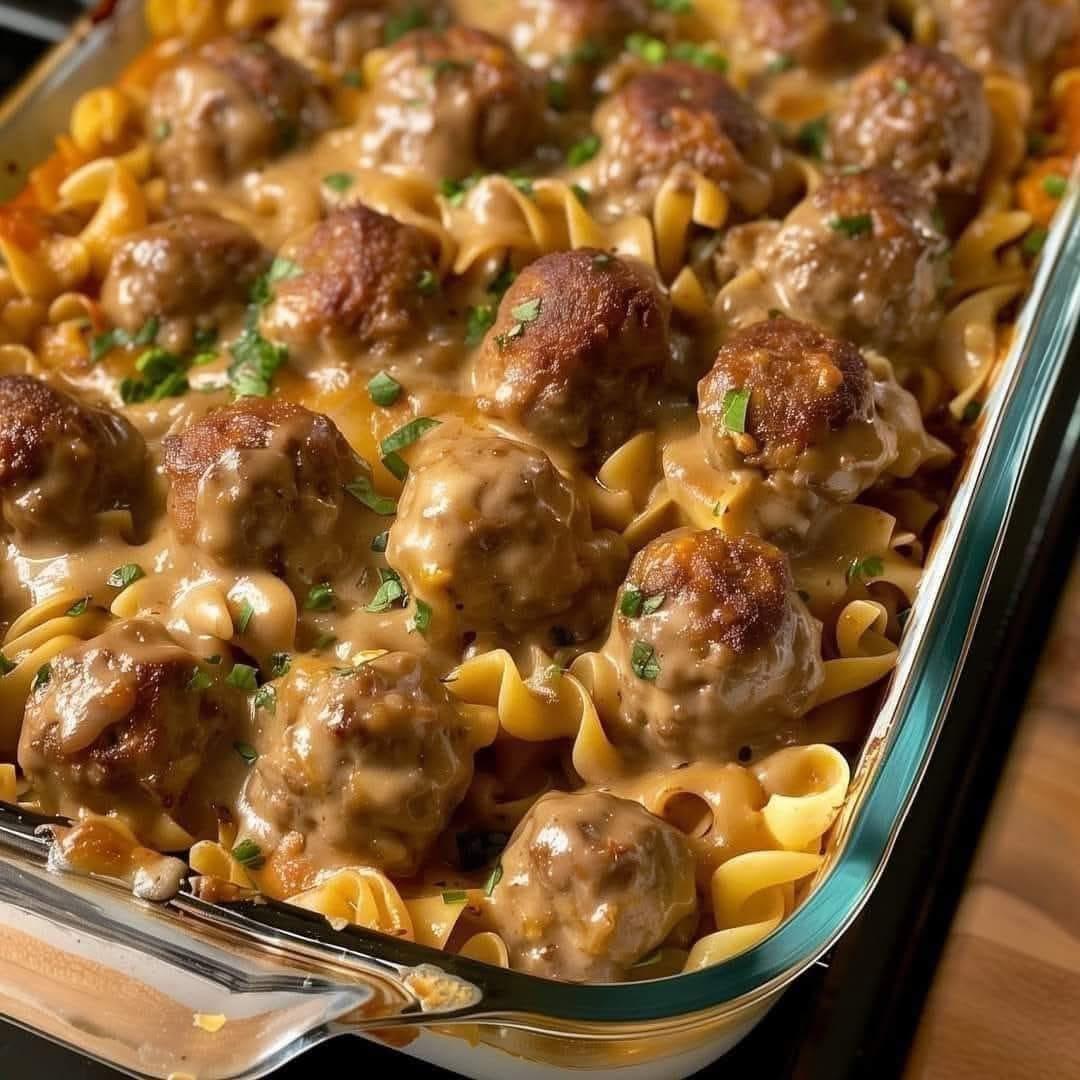Introduction
Swedish Meatballs and Noodles is a beloved dish that embodies the essence of comfort food. Originating from Sweden, this hearty meal features tender, flavorful meatballs simmered in a creamy, savory sauce, served over a bed of soft egg noodles. It’s a dish that warms the heart and satisfies the palate, making it a favorite for family dinners and gatherings.
The meatballs are typically made from a blend of ground beef and pork, seasoned with aromatic spices like allspice and nutmeg, which give them a distinctive flavor. The creamy sauce, enriched with beef broth and heavy cream, adds a luxurious touch that perfectly complements the meatballs. Served over egg noodles, this dish creates a delightful harmony of textures and flavors.
Whether enjoyed on a cozy weeknight or at a festive holiday gathering, Swedish Meatballs and Noodles is a dish that brings people together. Its rich taste and comforting nature make it a timeless classic that continues to be cherished in homes around the world. Get ready to indulge in a plate of this deliciousness that is sure to please everyone at the table!
Ingredients
For the Meatballs:
1 pound ground beef (or a mix of beef and pork)
1/2 cup breadcrumbs
1/4 cup grated onion
1/4 cup milk
1 egg
1 teaspoon garlic powder
1 teaspoon salt
1/2 teaspoon black pepper
1/2 teaspoon allspice (optional)
1 tablespoon fresh parsley (chopped, optional)
For the Sauce:
2 tablespoons butter
2 tablespoons all-purpose flour
2 cups beef broth
1 cup heavy cream
1 tablespoon Worcestershire sauce
Salt and pepper to taste
For the Noodles:
8 ounces egg noodles
Fresh parsley for garnish (optional)
Instructions
Prepare the Meatballs:
In a large bowl, combine ground beef, breadcrumbs, grated onion, milk, egg, garlic powder, salt, pepper, allspice, and parsley. Mix until well combined.
Shape the mixture into small meatballs (about 1 inch in diameter).
Cook the Meatballs:
In a large skillet, heat a bit of oil over medium heat. Add the meatballs in batches, cooking until browned on all sides and cooked through (about 10-12 minutes). Remove and set aside.
Make the Sauce:
In the same skillet, melt the butter. Add the flour and whisk to form a roux, cooking for about 1 minute.
Gradually whisk in the beef broth and bring to a simmer. Then add the heavy cream and Worcestershire sauce, stirring until the sauce thickens. Season with salt and pepper to taste.
Combine Meatballs and Sauce:
Return the cooked meatballs to the skillet, coating them in the sauce. Simmer for an additional 5 minutes.
Cook the Noodles:
While the meatballs are simmering, cook the egg noodles according to package instructions. Drain and set aside.
Storage Methods
To keep your Swedish Meatballs and Noodles fresh and delicious, follow these storage methods:
Room Temperature
Duration: Up to 2 hours.
Method: If you have leftovers, do not leave them out for more than 2 hours to prevent spoilage.
Refrigeration
Duration: Up to 3-4 days.
Method:
Allow the dish to cool completely.
Transfer the meatballs and noodles to an airtight container or a resealable plastic bag.
Store in the refrigerator. The sauce may thicken slightly upon cooling.
Freezing
Duration: Up to 2-3 months.
Method:
For Meatballs and Sauce:
Cool completely, then place the meatballs in a single layer on a baking sheet and freeze until solid.
Transfer to a freezer-safe container or resealable plastic bag, removing as much air as possible.
For Noodles:
Cooked noodles can also be frozen. Toss them with a little oil to prevent sticking, then freeze in a separate container.
Reheating
From Refrigeration:
Preheat your oven to 350°F (175°C).
Place the meatballs and sauce in an oven-safe dish, cover with foil, and heat for about 20-25 minutes until warmed through.
For noodles, reheat in a microwave or in a pot with a splash of water.
From Freezing:
Thawing: Move the meatballs and noodles to the refrigerator overnight or allow them to sit at room temperature for a few hours.
Reheat: Follow the same reheating method as for refrigerated leftovers.
Tips
Avoid Moisture: Store in a cool, dry place to prevent spoilage.
Check for Freshness: Always check for any signs of spoilage before consuming stored food.
